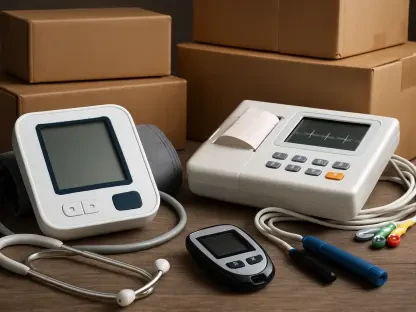Imagine a world where every healthcare provider, from a general practitioner to an emergency room doctor, has immediate access to a patient’s comprehensive medical history. This could be the reality for New Zealand as it embarks on the ambitious Shared Digital Health Records (SDHR) project, which is set to revolutionize patient health records management.
The Dawn of a New Era in Patient Health Records
As modern medicine increasingly relies on data, the efficient management and accessibility of patient records have become paramount. The SDHR project promises to bridge existing gaps and unify patient records across New Zealand, potentially transforming the way healthcare is delivered and experienced. Could this initiative mark the dawn of a more connected and efficient healthcare ecosystem?
The Need for Change: Addressing Fragmentation and Inconsistency
Currently, patient health records in New Zealand suffer from fragmentation and inconsistency. With several systems such as Health One and TestSafe operating independently, clinicians often struggle with incomplete patient data, leading to delays and errors in patient care. This disjointed access hampers the ability of healthcare providers to deliver optimal care and undermines their performance.
Fragmented systems lead to duplicated tests and delayed treatments, both of which can be harmful to patients. These archaic methods contrast sharply with the rapid advancements in health technology, highlighting the urgent need for a cohesive and comprehensive patient health record system.
Unifying Access: Centralizing Patient Health Information
The SDHR project aims to consolidate these disparate records into a single, unified system. The initial phase involves the integration of existing shared records and nationwide clinical data, leveraging current infrastructure to create a consistent view of patient information. This centralization promises to provide a seamless and reliable database that enhances both the scope and accuracy of available medical data.
By connecting data from various sources, the SDHR project intends to ensure that healthcare providers can access all relevant patient information in one place. This unification process is expected to streamline workflows, reduce the margin for error, and ultimately, improve patient outcomes.
Enhancing Clinician Access and Patient Care
For clinicians, the benefits of the SDHR project are manifold. Comprehensive access to patient records can significantly enhance clinical decision-making. When healthcare professionals have the full picture of a patient’s medical history, they can make more informed decisions, leading to better, more personalized care plans.
Moreover, improved access to patient data can lead to increased operational efficiency within healthcare facilities. Tasks such as tracking patient history or checking previous treatments can be done more swiftly, freeing up valuable time that can be invested in patient care.
Privacy and Consent: Balancing Accessibility with Security
One of the highest priorities of the SDHR project is ensuring that patient privacy and consent are not compromised. To this end, robust consent controls and privacy options have been embedded in the system. Initial testing focuses on understanding consumer data consent priorities and ensuring patient autonomy is respected at every stage.
Measures include allowing patients to opt-out and reverse their consent decisions whenever necessary. These stringent privacy protocols ensure that even as patient data becomes more accessible, it remains secure and under the control of the individuals to whom it belongs.
Applications and Future Vision
A prominent application of the SDHR will be to support 24/7 General Practitioner telehealth services, which have become increasingly vital. The future vision extends beyond telehealth to include urgent care facilities and emergency departments. Preparing for such comprehensive usage, the SDHR system aims to integrate with health sectors like first responders and specialized services.
The long-term goal is to enhance data quality and broaden access across various healthcare settings, ensuring that all aspects of patient care benefit from this unified approach. This holistic vision promises a more interconnected and responsive healthcare system.
Expert Insights and Real-World Impacts
Healthcare professionals and project leaders foresee significant positive impacts from the SDHR project. Insights from previous data initiatives like the National Health Index and the Hira program suggest that centralized data can greatly improve service delivery. For instance, a leader involved in the SDHR project remarked, “With a unified health record system, the quality of care patients receive will be unparalleled.”
Case studies show that when clinicians have comprehensive patient histories, medical errors decline, and patient satisfaction increases. These real-world insights underscore the transformative potential of SDHR for New Zealand’s healthcare system.
Practical Implementation: Steps Toward Adoption
Adopting the SDHR system requires a clear and structured approach for clinicians and healthcare providers. Training programs, comprehensive guides, and integration strategies will play a crucial role in ensuring a smooth transition. Providers must be equipped with the knowledge and tools to adapt their workflows to this new system.
Best practices include regular updates and feedback sessions to continuously refine the system’s efficiency. Ensuring that all stakeholders are on board and well-informed will be essential in realizing the full potential of the SDHR project.
In conclusion, the SDHR project signifies a monumental step forward in unifying health information access across New Zealand. The integration and centralization of patient records are expected to enhance data quality, broaden access, and improve overall healthcare delivery. This transformative initiative is a beacon of progress, paving the way for a more efficient and patient-centered healthcare system.









